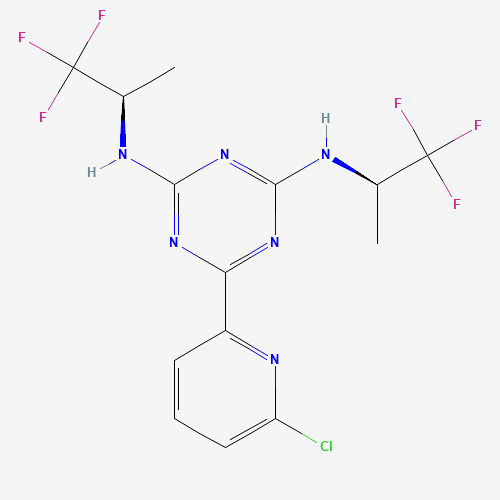Unravelling the Genetics of Gliomas
Using genomic sequencing in studies partially supported by the Division of Cancer Biology (DCB), researchers discovered that mutations in isocitrate dehydrogenase 1 (IDH1) and IDH2 (key regulators in cellular metabolism) occur in gliomas.
According to Dr. Hai Yan (an investigator with cancer genetics experience who co-led these studies), technological advancements in sequencing at the time played an important role in this fundamental cancer research. He also said that this work, “not only illuminated the molecular landscape of these [brain] tumors, but also provided invaluable insights for future research and potential treatment strategies.”
Building on those studies, The Cancer Genome Atlas (TCGA) Network performed a genome-wide analysis of low-grade gliomas, which could either progress to glioblastoma or remain stable for years. This work identified three molecular classes of low-grade gliomas.
Prior to this genomic analysis, gliomas were generally classified and diagnosed via histology (i.e. the appearance of the brain tumor tissue under a microscope), which was highly variable and a poor indicator of patient outcomes.
When describing the importance of the research, Dr. Daniel Brat (an investigator involved in the TCGA study and a brain tumor biology researcher) said, “Now, by molecular testing, we know that we can divide adult diffuse [low-grade] gliomas into those tumors that have an IDH mutation and those that don't.” He further explained that IDH mutant low-grade gliomas often occur in individuals in their 30s – 40s.
Based on the identification of IDH1 and IDH2 mutant low-grade gliomas, scientists started exploring the biology of IDH mutations in brain tumors. “Foundational studies on glioma driver mutations set the stage for the development of targeted therapies,” stated Dr. Yan.
Characterizing and Developing Preclinical Therapeutics for IDH-Mutant Low-Grade Glioma
Following the genomic studies, researchers wanted to know if and how IDH mutations contributed to the development of glioma, as well as whether the mutations played an active role in cancer progression. In other words, scientists started investigating if IDH mutations could be a potential therapeutic target to treat low-grade gliomas. According to Dr. Brat, “You can't target what you don't know about very effectively.”
This led to cancer biology studies, including many supported by DCB (described below), that advanced the understanding of the biology of IDH mutations and their mechanistic role in promoting glioma:
Dr. Yan demonstrated that suppressing the expression of mutant IDH inhibits cancer cell growth and suggested that it could be a target for anti-cancer therapies.
Biological research also showed that mutant IDH1 and IDH2 produce 2-hydroxyglutarate, an oncometabolite that promotes the development and progression of brain tumors. Delving deeper, scientists identified molecular factors involved in the expression levels of the oncometabolite with IDH mutations and revealed a mechanism by which the accumulation of the oncometabolite contributes to IDH mutant glioma pathogenesis.
Building on the data related to 2-hydroxyglutarate, multiple studies found that IDH mutations induce epigenetic changes (specifically hypermethylation of DNA) and downstream alterations in the gene expression of cancer-related pathways. They further showed that the epigenetic changes create a cell state that is primed for malignancy.
Next, researchers found that suppressing the gene expression of the enzyme that makes 2-hydroxyglutarate or blocking epigenetic changes (i.e. methylation) caused by IDH mutations inhibits cancer cell growth in preclinical models.
Subsequent studies with inhibitors of the mutant IDH1 and IDH2, specifically AGI-5198 (in a study partially supported by DCB) and AG-881 (a.k.a Vorasidenib), showed that suppressing the levels of 2-hydroxyglutarate reduces the growth of IDH-mutant cancer cells.
According to Dr. Ingo Mellinghoff (a neuro-oncologist at Memorial Sloan-Kettering Cancer Center and scientist of these preclinical studies), “these experiments answered the fundamental question whether inhibition of the mutant enzyme would be sufficient to slow down the growth of cancer cells with IDH1 or IDH2 mutation and led us to work towards the first human trials."
Clinical Trials Examining Vorasidenib, an IDH Inhibitor, as a Treatment for Low-Grade Glioma
Building on years of preclinical research, Vorasidenib was translated to the clinic and tested in a Phase 1 dose-escalating clinical trial as a treatment for patients with IDH-mutant glioma. The results showed that the drug was well tolerated by people and preliminary findings suggested it had antitumor activity in patients with recurrent or progressive mutant IDH low-grade glioma.
In a surgical study investigating its therapeutic mechanism-of-action, Vorasidenib was found to substantially reduce levels of 2-hydroxyglutarate and associated epigenetic changes related to IDH mutations by reversing gene expression programs associated with the mutant IDH1 enzyme.
Following the initial clinical studies, a Phase 3 trial called INDIGO examined the efficacy of Vorasidenib as a treatment in over 300 patients with mutant IDH low-grade glioma. Findings from the study revealed that Vorasidenib delayed the time to disease progression in patients with brain tumors when compared to a placebo (which is an inactive, non-drug substance).
Dr. Mellinghoff (the lead investigator of the INDIGO trial) shared the results that showed “patients with these brain tumors [i.e., low-grade gliomas], when they took this new pill, the tumors grew significantly slower.”
He further explained that patients with diffuse [low-grade] gliomas are generally treated with radiation and chemotherapy that often have negative side effects including impaired memory. Dr. Mellinghoff said, “Many of our patients at that age [in their 30s and 40s] worry greatly about a treatment like that.” In the study, Vorasidenib prolonged the time to tumor progression and pushed out the need for patients to receive harsh therapies that affect quality of life.
In discussing the clinical findings, Dr. Marta Penas-Prado (a neuro-oncologist at NCI who was not an investigator of the Phase 3 trial) said, “Having a targeted therapy that can potentially help patients with a specific subtype of the disease [specifically IDH-mutant glioma] is incredibly important.”
However, the clinical breakthrough of Vorasidenib “would not have been possible without all the research legwork and basic science,” stated Dr. Mellinghoff.
Future Directions for Vorasidenib and Glioma Therapy
Recent clinical findings built on a culmination of collaborative fundamental, translational, and early clinical discoveries show that Vorasidenib is a promising treatment for IDH-mutant low-grade gliomas. However, the success of the Phase 3 trial isn’t an end to the story, as its findings will continue to fuel brain tumor research and drug development.
When discussing opportunities related to the Vorasidenib trial, Dr. Penas-Prado explained that since the drug was only tested in patients without a prior history of radiation and/or chemotherapy treatment, there are questions about how patients who have already undergone these treatments will respond to the drug. Additionally, Dr. Daniel Brat (a glioma researcher) described that more research is needed to help patients with IDH-mutant higher-grade gliomas.
Dr. Mellinghoff said that a future direction for research is exploring Vorasidenib in combination with immunotherapy and that a team of clinician researchers are “in the midst of a clinical trial that is testing a combination therapy of Vorasidenib and Pembrolizumab [an immune checkpoint inhibitor that is used as an immunotherapy].”
Prior cancer biology research funded by DCB showed that mutant IDH reduces the infiltration of immune cells to the tumor and that the IDH oncometabolite of 2-hydroxyglutarate is immunosuppressive. These findings suggest that mutant IDH promotes an immunosuppressive brain tumor microenvironment. Dr. Mellinghoff's clinical trial is investigating if the combination therapy approach is more effective by reversing immunosuppression and enhancing antitumor immunity.
Some additional research questions include:
- How does low-grade glioma evolve in response to Vorasidenib treatment?
- What are mechanisms for the development of resistance to Vorasidenib?
- What are some potential second-line treatment strategies after Vorasidenib treatment?
Looking towards the future of improving treatments for patients with glioma, as well as reflecting on the history of Vorasidenib, it’s important to remember the value of cancer biology research in both the foundation and building blocks of clinical breakthroughs for cancer. As Dr. Monica Bertagnolli, the NIH Director, said at the AACR 2023 conference, “Basic scientific discovery is essential to everything we do, and it takes multi-level collaboration for that discovery to achieve benefit for patients.”
Acknowledgements
We would like to thank Drs. Hai Yan, Daniel Brat, Ingo Mellinghoff, and Marta Penas-Prado for providing their subject matter expertise and perspectives on the development of Vorasidenib. We would also like to acknowledge the NIH Office of Portfolio Analysis who provided consultation and portfolio analysis services to quantitatively generate a portfolio of publications related to the Phase 3 Clinical Trial results in the New England Journal of Medicine.

